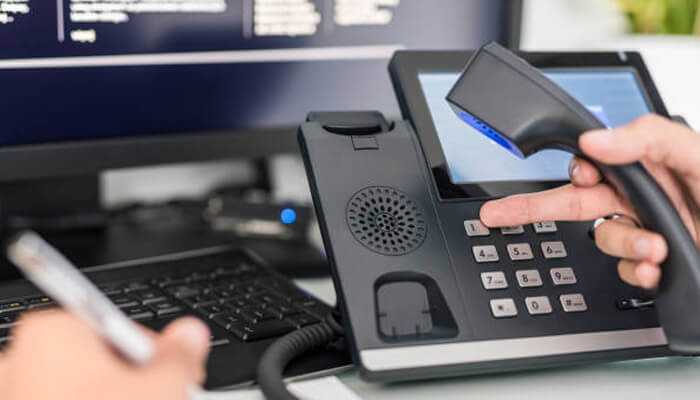Switching to VoIP (Voice over Internet Protocol) for your business communications is a smart move. It’s cost-effective, scalable, and feature-rich. But like any digital tool, it comes with a catch: security vulnerabilities. If you’re not careful, that sleek VoIP system you rely on for client calls, internal meetings, and sales conversations could be a backdoor for cybercriminals. Thankfully, you don’t have to be a cybersecurity expert to protect your VoIP network. You just need to put a few smart VoIP security best practices in place and stay vigilant.
Here’s how to keep your business conversations secure and your VoIP system locked down.
1. Use Strong, Unique Passwords
Yes, it sounds basic. But too many businesses still use default credentials or lazy passwords like “admin123.” If your VoIP phone, router, or PBX system is still running on factory settings, you’re basically inviting hackers in with open arms.
Change every default login and make sure your passwords are strong, unique, and updated regularly. Use a mix of uppercase and lowercase letters, numbers, and symbols – and never reuse passwords across systems.
A password manager can help you keep everything organized without resorting to sticky notes on your monitor.
2. Enable Encryption Everywhere You Can
You wouldn’t send sensitive data over an open Wi-Fi network, right? Then don’t let your voice data travel unprotected either.
VoIP calls can be intercepted if they’re not encrypted. Look for solutions that support protocols like SRTP (Secure Real-Time Transport Protocol) for encrypting voice streams and TLS (Transport Layer Security) for securing signaling data. It sounds technical, but most reputable VoIP providers offer encryption as a built-in feature – you just need to enable it.
Encrypting your VoIP traffic means that even if someone manages to intercept your data, they won’t be able to make sense of it. That’s a big win for business phone security.
3. Use a Firewall and VoIP-Aware Security Tools
VoIP systems communicate over your data network, which means they can be exposed to the same threats as any internet-connected device. A well-configured firewall is your first line of defense.
Set up a firewall that’s specifically designed to handle VoIP traffic. These are sometimes called VoIP-aware firewalls or Session Border Controllers (SBCs), and they’re built to understand and manage VoIP protocols without blocking legitimate calls. A standard firewall might mistake your voice traffic for suspicious behavior and drop calls or degrade quality – so make sure your tools know what they’re dealing with.
Pair your firewall with intrusion detection and prevention systems (IDS/IPS) to monitor for unusual activity. If someone is probing your network or trying to brute-force their way in, you’ll know.
4. Restrict Access and Segment Your Network
Not everyone in your company needs access to VoIP administrative settings or call records. Role-based access controls let you limit who can make changes, see logs, or manage user data.
And don’t stop there. Segment your VoIP traffic onto its own VLAN (virtual local area network). That way, even if another part of your network is compromised – say, someone downloads a virus through an email link – your voice data stays protected. Network segmentation adds a layer of isolation that makes it harder for attackers to move laterally across your infrastructure.
5. Monitor Call Logs and Usage Reports
You might think you’d notice right away if someone hacked your VoIP system. But toll fraud – the practice of routing international calls through your system for free – can rack up thousands of dollars before you catch on. That’s why monitoring is critical.
Set up automatic alerts for unusual calling patterns, especially:
1. A sudden spike in international calls
2. Calls being made after business hours
3. Repeated failed login attempts
4. Long call durations that don’t match your business patterns
VoIP dashboards typically give you access to usage logs and real-time reports. Make it a habit to review them regularly.
6. Keep Your Systems Updated
VoIP software, firmware, and apps need regular updates – just like your phone or your laptop. Hackers love exploiting old vulnerabilities that have already been patched by developers. So if you’re skipping updates, you’re leaving the door wide open.
Enable automatic updates whenever possible, especially for your phones and routers. If your VoIP system includes mobile apps or desktop clients, make sure your team is using the latest versions. And if your provider manages the updates on their end, double-check that they’re staying on top of it.
7. Work With a Secure, Reputable VoIP Provider
Not all VoIP providers are created equal. Some cut corners on security to keep costs low. Others don’t give you access to the tools or visibility you need to protect your business.
Look for a provider that prioritizes security from the ground up. They should offer built-in encryption, fraud detection, secure data centers, and a clear incident response plan. Ask questions.
1. What happens if there’s a breach?
2. How often do they test for vulnerabilities?
3. Do they offer multi-factor authentication for admin access?
Partnering with the right provider can make or break your VoIP security setup. Make sure you take the time to get this right.
Adding it All Up
At the end of the day, your employees are often your weakest link – or your first line of defense.
If someone clicks a phishing link or gives away credentials over the phone, no amount of encryption will save you. That’s why user training matters.
Train your team on VoIP security best practices. This includes things like:
1. Don’t share passwords or use weak ones
2. Avoid connecting to VoIP systems over public Wi-Fi
3. Report unusual call activity immediately
4. Be wary of calls requesting sensitive information
The goal is to build a culture of security, not fear. When everyone understands the stakes and their role in keeping systems secure, you’re far better protected. That, combined with the practical strategies above, will set you up for success.



